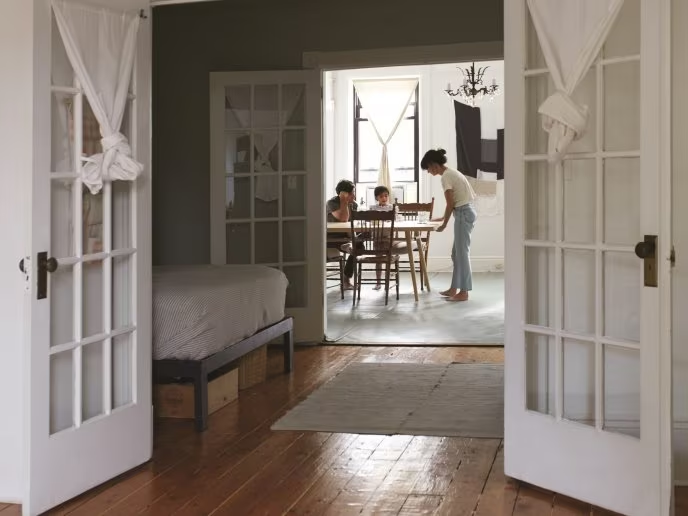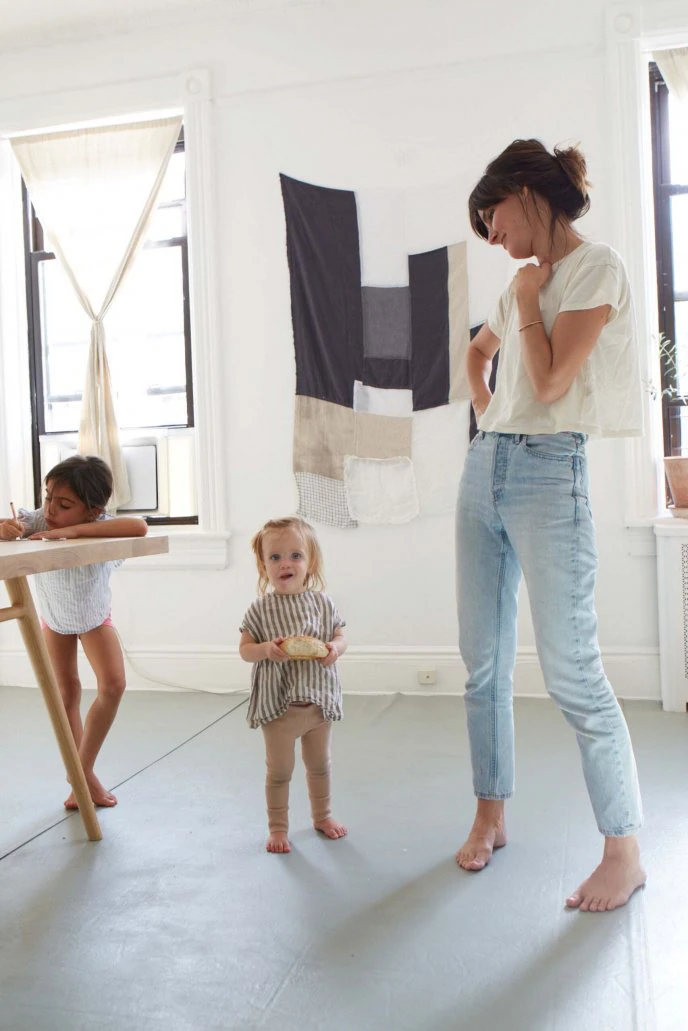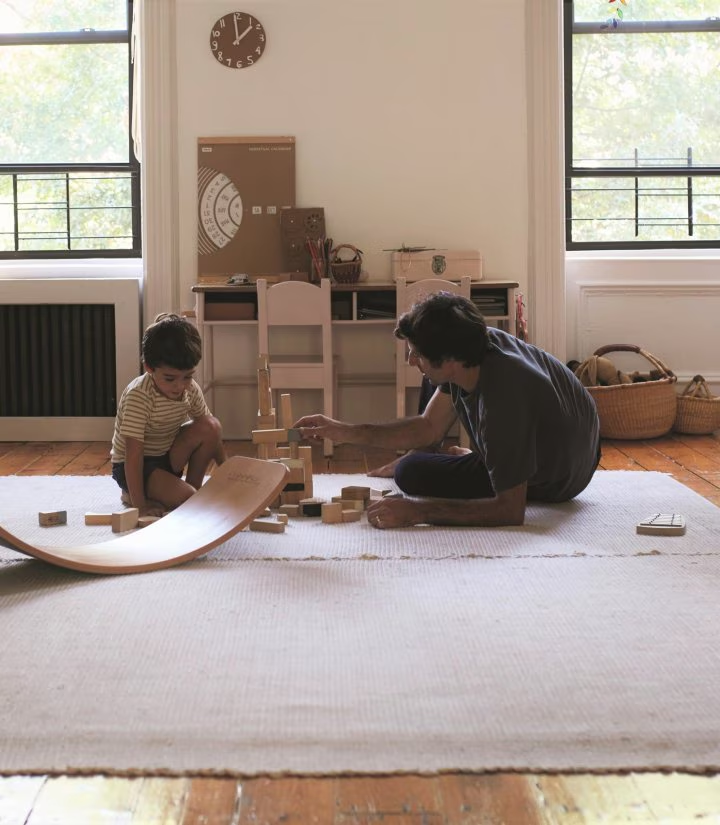As an expert in how to make the best of small living spaces, Erin was undaunted by the size of a one-bedroom apartment when she and her husband welcomed their third child. But as restrictions during the pandemic pulled walls in closer, the family found themselves needing more space to breathe.

Families with young children tend to move as a kind of amoebic blob. In a small space or a larger one, we’re mostly always together. At any given moment I’ll have a toddler clinging to my legs and another child in my lap or nuzzling under my armpit – squirmy bodily extensions headed in different directions.
When we first welcomed our third child into a cosy one-bedroom home in Brooklyn, we weren’t daunted by the size. We were used to togetherness, and besides, as we assured our wondering friends and family, an apartment is a place to sleep and eat and come home to rest, but so much of the actual living happens out in the wider world. We had jobs, our kids had school and daycare, and we’d be in those places more often than we’d be in our apartment.
Until, of course, we weren’t. Three weeks after bringing our new baby home, the coronavirus pandemic locked down New York City. Our quiet days of getting acquainted with our newborn were replaced by a spring spent unravelling in cramped quarters.
We were lucky of course – all five of us were able to stay hunkered safely at home. Still, I think back on those early months and wonder at how we made it through them, keeping jobs and children and our own relationship intact.
The truth is that by September, we’d reached a breaking point. Working and attending school and one of us learning to crawl in that tiny space was taking its toll, and so we moved a mile down the road to an apartment with an extra 300 square feet (almost 28 square metres) and a footprint that spanned the floor of a pre-war brownstone.
In lots of ways, this new apartment is just a stretched-out version of our last place. We haven’t added much that’s new, and the instincts of minimalism borne from years spent living in small living quarters haven’t left us, but our breathing room has expanded.
Our new apartment became a place where we could say yes in a year full of nos. Last winter we granted permission to have our kids use their bunkbed as a climbing gym.
We projected movies onto blank walls and made blanket forts to watch them from. We bought two cotton rag rugs for the floor of their room and pieced them together to form a gigantic soft spot to lounge, layered on top of the thickest rug pad we could find.
In the living room I painted a wall-to-wall canvas floor cloth to cover sticky vinyl flooring, and the result has been a clean, smooth surface for sprawling. We use every inch of it. By day it sees puzzles, games of checkers, and rolls of drawing paper.
On most nights, the space becomes a dance floor. (If you shine a torch through the crystal hanging from the centre of the old chandelier and spin circles around it, it’s a disco ball.)
I wanted our new home to feel expansive even as so much of our world has shrunk, but I also found solace in its definitive boundaries. In an apartment that is mercifully more spacious than our last, a tiny antechamber office is the place I go to escape – and work.
This spring I found an antique door that fits perfectly in the frame of the small doorway – a solid wood centenarian with its original glass knob – and hanging it felt symbolic. Now, when the door is closed and strains of classical piano are playing through a speaker, it’s possible to find quiet, and piece my thoughts together.
The space isn’t mine alone – like every spot in a small space, its functions are many. While we’re both still working from home, my husband and I trade off using it during the day, and at night we wheel in a mini-crib and draw the charcoal- coloured shade. Our workday sanctuary for adults becomes a toddler’s nighttime sanctuary for sleep.
“I wanted our new home to feel expansive even as so much of our world has shrunk, but I also found solace in its definitive boundaries.”
Elsewhere, doors are a comfort, too. Two sets of French doors separate the three main rooms in the apartment, and on fall evenings when the sun sets early and everyone is still wide awake past dark, I like to leave the curtains – bed sheets I stripped into four pieces and hung from thin rods – open on the glass doors. I light a tall beeswax taper and watch its flickering reflection through the two sets of doors.
From the dining table I can see kids playing – peacefully, if I’m lucky – from a distance. They’re still little and we’re not out of the amoeba stage yet, but at bedtime, when we draw the curtains and close the doors, an apartment that sees so much movement during the day goes still.
Our bedroom, which serves as the main thoroughfare through our home during the day, becomes its own little nest at night, and more than a year later, the quiet thrill of being able to fall asleep in a room of our own hasn’t worn off.



“Now, when the door is closed and strains of classical piano are playing through a speaker, it’s possible to find quiet and piece my thoughts together.”
Photography by Jurate Veceraite
Download the Life at Home Magazine
